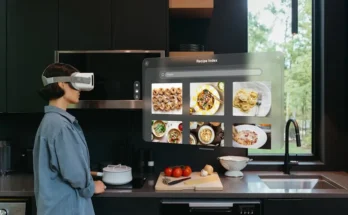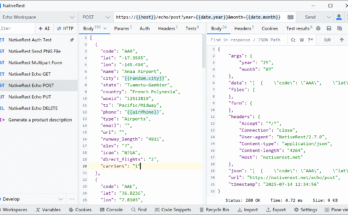Technology no longer merely supports our lives—it shapes them. What was once the subject of science fiction is now standard reality. Smart homes, wearable AI, and even digital replicas of ourselves are becoming as commonplace as smartphones were a decade ago. As we edge deeper into the 21st century, the world around us isn’t just changing—it’s being reprogrammed. Welcome to the era where technology doesn’t follow life, it leads it.
The Rise of Invisible Tech:
-
From Gadgets to Ghosts
Ten years ago, technology was defined by visibility. Phones were flashy, computers were bulky, and gadgets screamed for attention. Now, innovation has taken on a stealth mode. Voice assistants sit quietly in the corner, processing requests. Smart thermostats adjust the temperature without us lifting a finger. Our homes know when we arrive, and our fridges know what we’re missing for dinner. This invisible tech is the quiet revolution, woven into the fabric of our daily routines.
-
Seamless Integration into Everyday Life
No longer do we go to tech; tech comes to us. Smart mirrors suggest outfits based on the weather. Fitness bands track sleep patterns and nudge us when it’s time to hydrate. Tech is now a lifestyle companion, not a separate entity. It’s not about the next big thing—it’s about the next invisible thing. This seamless integration is moving us toward a life of effortlessness, where machines anticipate rather than respond.
Artificial Intelligence:
-
Automation with Empathy
AI was once feared as the great job stealer. But in reality, it’s proving to be more of a partner than a threat. From AI-driven design tools that help creatives brainstorm to virtual health assistants that support medical teams, AI is becoming the colleague that never sleeps, never complains, and always learns. What’s changing now is its ability to not just compute but also empathize. Emotional AI is training itself to read facial expressions, tone of voice, and even body language.
-
The Human-Machine Collaboration
The future won’t be run by machines alone. It’ll be managed by hybrid teams—people and machines working side by side. Coders no longer work alone but with code-generating AIs. Writers co-author with AI tools that offer grammar suggestions and content ideas. And in manufacturing, robots perform precision tasks while humans manage the strategic decisions. Together, they’re creating a new kind of workforce—one that’s not limited by biology or binary code.
Virtual Realities and Their Real World Impact:
-
Beyond Gaming
When virtual reality first made headlines, it was all about immersive gaming. Now, it’s expanding into every sector imaginable. Architects use VR to walk through their blueprints. Therapists use it to help patients confront phobias in controlled environments. Students take virtual field trips to ancient ruins. VR has evolved from entertainment to education, from fantasy to functionality.
-
The Metaverse and the Digital You
Enter the metaverse—a persistent, shared digital universe where avatars live, work, and play. In this emerging ecosystem, people attend virtual concerts, own digital real estate, and even conduct business. It’s not just a playground; it’s a new economy. Whether it becomes the next evolution of the internet or just a very expensive trend remains to be seen. But one thing is clear: we are building a parallel universe—pixel by pixel.
Wearables That Go Beyond Fitness:
-
Smart Accessories and Smarter Bodies
Gone are the days when wearables were just pedometers. Today’s smartwatches monitor heart rhythms, blood oxygen levels, and even detect falls. But the future lies in wearables that don’t just monitor but actively intervene. Imagine a wristband that alerts you to a heart condition before symptoms appear or earbuds that adjust sound based on your emotional state. Wearable tech is becoming less about stats and more about survival.
-
Fashion Meets Function
Tech is no longer the antithesis of style. Collaborations between designers and engineers are producing smart fabrics that heat up, cool down, or change color. Shoes that track your posture, jackets that charge your phone, and glasses that translate languages in real time are turning heads—not just for how they look but for what they can do. This fusion of fashion and function is creating a new kind of couture: intelligent apparel.
The Ethical Frontier of Innovation:
-
Privacy in the Age of Pervasive Tech
With great tech comes great responsibility. As devices become more integrated into our lives, the data they collect becomes more intimate. Your smartwatch knows your heart rate, your smart speaker knows your voice, and your apps know where you are 24/7. The challenge now is not just collecting data but protecting it. The conversation has shifted from convenience to consent.
-
Regulating Tomorrow and Today
Governments and tech companies are now at a crossroads. Do we regulate innovation or let it flourish unchecked? The balance is delicate. Too much control stifles progress; too little invites chaos. New frameworks are being discussed around digital rights, algorithmic accountability, and ethical AI development. The decisions we make today will dictate how free—or how surveilled—our future becomes.
When Tech Becomes Personal:
-
Digital Twins and Legacy
In an era of hyper-personalization, technology is starting to replicate not just our actions but our identities. Digital twins—virtual replicas of physical entities—are being used in industries from aerospace to personal health. But the idea is growing even deeper. People are now training AI to mimic their voices, their writing, even their personalities. Imagine a version of you that lives online long after you’re gone. Tech isn’t just supporting life anymore; it’s starting to preserve it.
-
The Emotional Side of Innovation
We often talk about what tech can do. But rarely do we ask how it makes us feel. As machines become more human-like, we’re starting to form bonds with them. Children talk to their voice assistants. Seniors find companionship in robotic pets. Loneliness is being countered by code. While it’s easy to laugh off these connections, they reveal something profound: that the more advanced our tech becomes, the more it mirrors our need for connection.
Conclusion:
The story of technology is no longer about gadgets or apps—it’s about identity, community, ethics, and emotion. We’re not just using tech; we’re living it. The boundary between the physical and digital worlds is dissolving, and what emerges is a new kind of reality—one written in code, yet deeply human.
As we move forward, the question isn’t “what will technology do next?” but “how will we choose to shape the world it creates?” Because in the end, tech doesn’t just follow trends—it defines them. And it’s not just changing the way we live. It’s rewriting who we are.




